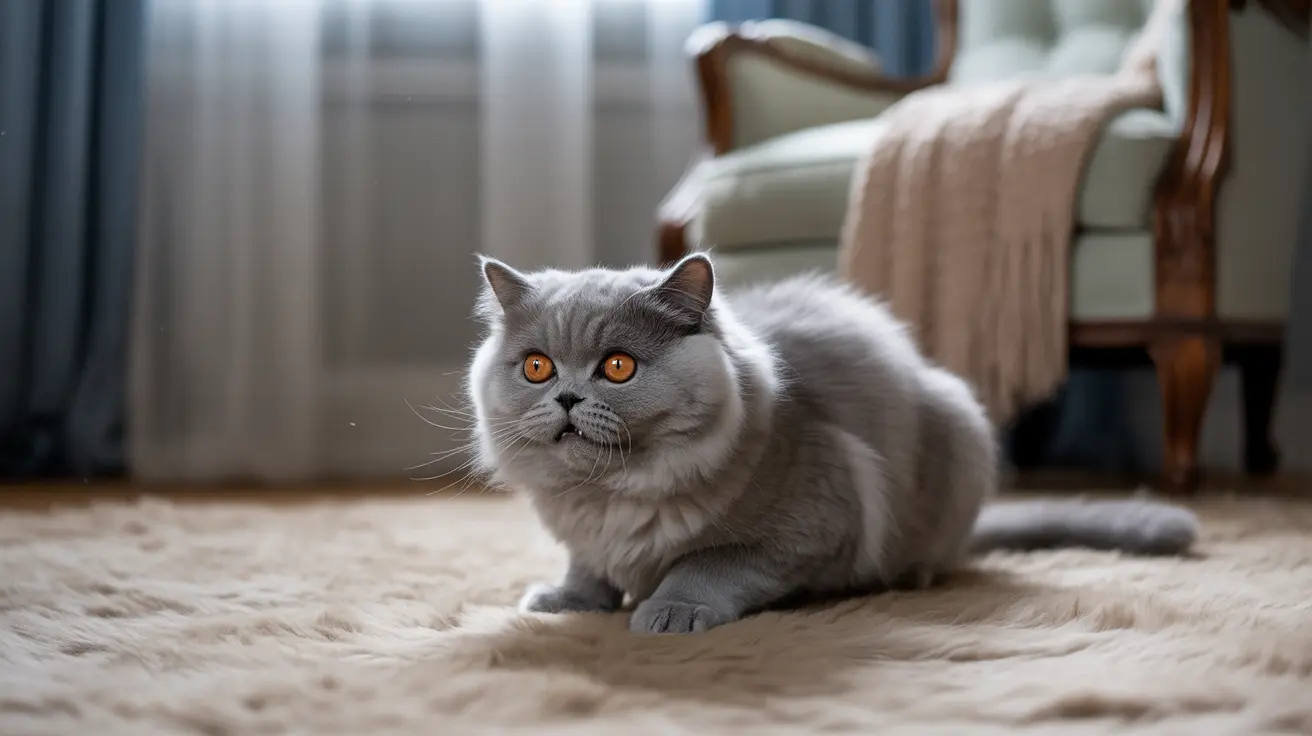When your cat unleashes a deep, rumbling growl, they're sending you an important message. Cat growling is a crucial form of feline communication that serves as an early warning system, alerting others that your cat feels threatened, frightened, or ready to defend their territory. Understanding what triggers this behavior and how to respond appropriately is essential for maintaining a harmonious relationship with your feline friend.
In this comprehensive guide, we'll explore the various reasons behind cat growling, how to interpret this behavior in different contexts, and when it might signal a need for veterinary attention. We'll also provide practical strategies for managing and preventing situations that trigger growling in cats.
Common Reasons Why Cats Growl
Fear and Threat Response
Cats often growl when they feel threatened or scared. This could be triggered by unfamiliar people, other pets, or sudden environmental changes. The growl serves as a clear "back off" signal, indicating that your cat needs space and feels unsafe in their current situation.
Territorial Defense
Cats are naturally territorial creatures, and growling is one way they protect their space. This behavior is particularly common when new pets are introduced to the household or when outdoor cats appear near windows or doors. Mother cats are especially prone to territorial growling when protecting their kittens.
Pain and Discomfort
A growling cat might be experiencing physical pain or discomfort. Medical conditions such as arthritis, dental problems, or gastrointestinal issues can cause a typically friendly cat to growl when touched or approached. Any sudden increase in growling behavior warrants a veterinary checkup.
Understanding Your Cat's Body Language
Physical Signs Accompanying Growls
When a cat growls, pay attention to their body language for additional context:
- Flattened ears
- Dilated pupils
- Raised fur (piloerection)
- Twitching or lashing tail
- Crouched defensive posture
Different Types of Growls
Cats produce various types of growls, each with specific meanings:
- Low, sustained growls: Warning signals
- Short, intense growls: Immediate threat response
- Growl-howl combinations: Escalating distress
- Food-related growls: Resource guarding
How to Respond to a Growling Cat
Immediate Actions
When your cat growls, follow these essential steps:
- Give them space immediately
- Avoid direct eye contact
- Don't punish or scold them
- Remove potential threats or stressors
- Provide an escape route
Long-term Solutions
To prevent future growling episodes:
- Create a stress-free environment
- Maintain consistent daily routines
- Provide multiple resource stations in multi-cat homes
- Ensure regular veterinary check-ups
- Consider professional behavioral consultation if needed
Frequently Asked Questions
What does it mean when my cat growls at me or other pets?
When a cat growls at you or other pets, they're communicating discomfort, fear, or a desire to protect their territory. This is a warning signal requesting space and indicating that they feel threatened or uncomfortable with the current situation.
Why does my cat growl during petting or handling?
Growling during petting or handling often indicates overstimulation, physical discomfort, or fear. Some cats have sensitive areas or may only tolerate limited physical contact. Always respect these boundaries and watch for early warning signs.
When should I be concerned if my cat starts growling suddenly?
Sudden or increased growling warrants concern if it's accompanied by changes in eating habits, mobility issues, or other behavioral changes. Schedule a veterinary examination to rule out medical causes, especially if the behavior is new or unusual for your cat.
How can I help reduce my cat's growling caused by fear or territorial behavior?
Reduce fear-based growling by creating a predictable environment, providing hiding spots, and using positive reinforcement training. For territorial issues, ensure multiple resource stations and gradually introduce new pets or environmental changes.
Can a cat's growling signal that it is in pain or ill?
Yes, growling can be a sign of pain or illness, especially if it's a new behavior or occurs during specific activities like jumping or being touched. Any sudden change in vocalization patterns should be evaluated by a veterinarian to rule out medical issues.
Remember, growling is a normal and important part of feline communication. By understanding and respecting this warning signal, you can better protect both your cat's well-being and your relationship with them. If you're ever uncertain about your cat's growling behavior, consulting with a veterinarian or certified feline behaviorist can provide valuable guidance and peace of mind.






